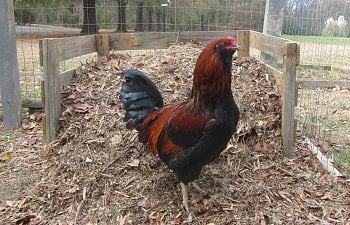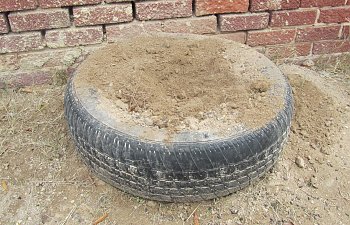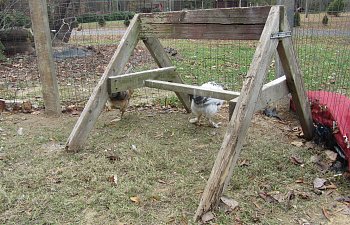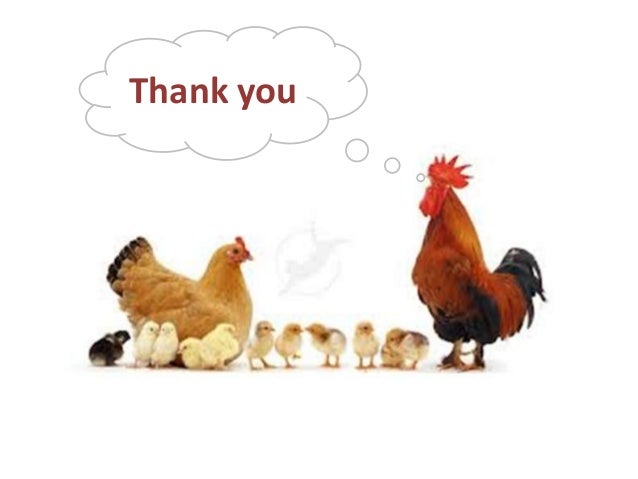We have just a few chicks left and the Big Brooder is rolling out of the store. The 2018 Chicken Season is over! We will begin again in January 2019. Thank You!
What is left???
1 Buff Brahma
7 Black Australorpe
5 Buckeye
All $2.99 each
- Cleaning out the coop and run and other daily tasks such as egg collecting. This changes their environment and chickens are intrigued by anything new.
- Inspecting the health of your flock and any other direct human contact.
- Providing table scraps, weeds, dirt clods, fodder, flats of sod etc.
- Letting them out to roam the run or free range.
As the winter months approach, and time and space constraints increase we find ourselves looking for more. What you provide need not be expensive or ornate, or even pretty. Most of the best toys are absolutely free. Below is a list of toys that many people have found effective in keeping their chickens entertained and happy.
Top Toys for Adult birds:

Compost piles are excellent sources of enrichment and food. Simply create your pile of compostable material and let the chickens work it at will. The chickens will enjoy digging up the bugs and worms and will be warmed by the heat that is created from the decomposing material. Keeping a compost heap or pile in the run also reduces the amount of foraging/digging they do elsewhere in their run which will help the vegetation grow and prevent a bare muddy run. (The one pictured is a frame made from an old privacy fence that was falling down on our property filled with yard and kitchen waste.)
Hanging cabbage, squash, lettuce, kale, spinach etc. from a string or bungee cord is a popular toy with a nutritional boost. If you can stick a skewer through it or tie a string around it then it is fair game to be hung either on the fence of the run, from the ceiling in the coop or anywhere else they might be able to play tetherball with it.
Interactive Treat dispensers. Anything from an empty beverage bottle with holes drilled in it to cat and dog toys designed with treat dispensing holes in them. If you can fill it with some form of treat and poke holes in it so that the chickens can kick it around and peck at it to make the food come out then you have yourself a toy. There are some companies that sell chicken treat dispenser toys as well. (Pictured is a reused plastic peanut butter jar with ¼” holes drilled in it and filled with wheat seed)

Dust Bathing Area. Provide an area where they can dust bathe freely. Any bucket, bin, old tire or any other device filled with dirt for them to bathe in is perfect. It will encourage them to do their dust bathing in one approved location and limit the amount of holes they dig elsewhere for the purpose. You can mix in some Diatomaceous earth or wood ash as well to help deter mites etc., but it isn’t necessary. (Pictured is an old tire found on our property and filled with dirt.)

Climbing/Perching places. The animal kingdom at large takes the term “top dog” pretty literally. Any spot that allows the head of the flock to perch above everyone else will be prized. Roosters especially prefer a spot where they can perch above the flock and crow their ownership of it to the rest of the world. Even an old tree that fell down on your property (or you cut down) can be erected in the run for this purpose. You could also build your run around an existing live tree for the purpose. Live trees also provide protection from overhead predators as well as forage and shade. (I found the sawhorse in the picture in the woods of our property. A simple sawhorse can be built out of one or two 2x4’s inexpensively, or salvaged pallets.)
Toys for Chicks: Non-food toys are best for chicks as their nutrition requirements depend mostly on their feed unless you are an experienced chicken nutritionist or a mama hen.
- Pet bird toys (parakeet shred a box &/or bird burrito) or any small kitten or baby toy such as fake mice, small balls, rattles, etc. The more colorful the better since chickens see color better than humans do.
- Mirror (the unbreakable varieties for babies cribs or parakeets etc. are ideal. Better safe than sorry.) An old cd on a string would be an excellent substitute for this as well. Not only will they enjoy their reflection, they will also enjoy the rainbows that will inevitably end up on the walls etc. of the brooder area. An old cd hung in the run area not only provides entertainment but can aid in deterring hawks and other aerial predators.
- Bin filled with sand (doubles as grit for wee ones also) or dry dirt for dust bathing.
- Tunnel made from an empty Oatmeal container.
- Make a chicken swing out of some rope and a large branch or a 2x4. This is great for helping them build the muscles necessary to keep them on their roosts as well as gives them a place out of the litter to warm their feet.
Other great toy ideas that are inexpensive or free to buy or make:
- Old stump or branch full of bugs, grubs and other creepy crawlies. This works for any piece of wood. Just leave it in one place for a few days to a week or so and let the bugs seek refuge under it – then just flip it over and let the flock go to town.
- newspaper to shred
- Cricket tubes (or just let crickets loose in the coop when they will be confined for an extended period of time). You can find these at most pet stores or tackle shops.
- Sunflower heads complete with seeds
- A post Halloween jack-o-lantern or any large squash or melon. Just drop it on the ground from high enough that it splits and let them do the rest.
- Suet cage or fruit basket stuffed with table scraps
- Old cd’s that are scratched beyond repair are great hung from a string along the fence of the run at or just above pecking height. If you are REALLY adventurous you can blow up a balloon, smash the cd’s and then glue them on to the balloon in a mosaic pattern and hang in the run/coop to catch the light.
- Boiled spaghetti is a special hit. Dye the noodles different colors for added fun.
- DIY bird feeders. Just do a Google search and you’ll come up with thousands of ideas. Just use scratch grains or BOSS or whatever else you have on hand. Molasses is a great tool for creating enough structure to hold it together enough for them to peck it to death.
Use your imagination and have fun. If it encourages their natural behaviors of eating, scratching, pecking, bathing, flying, perching or flock socialization then it is a good toy. They don’t have to be pretty and they don’t have to cost anything. If they don’t like it you can always take it away and try again another time, or move on to the next item. Enjoy your flock!

